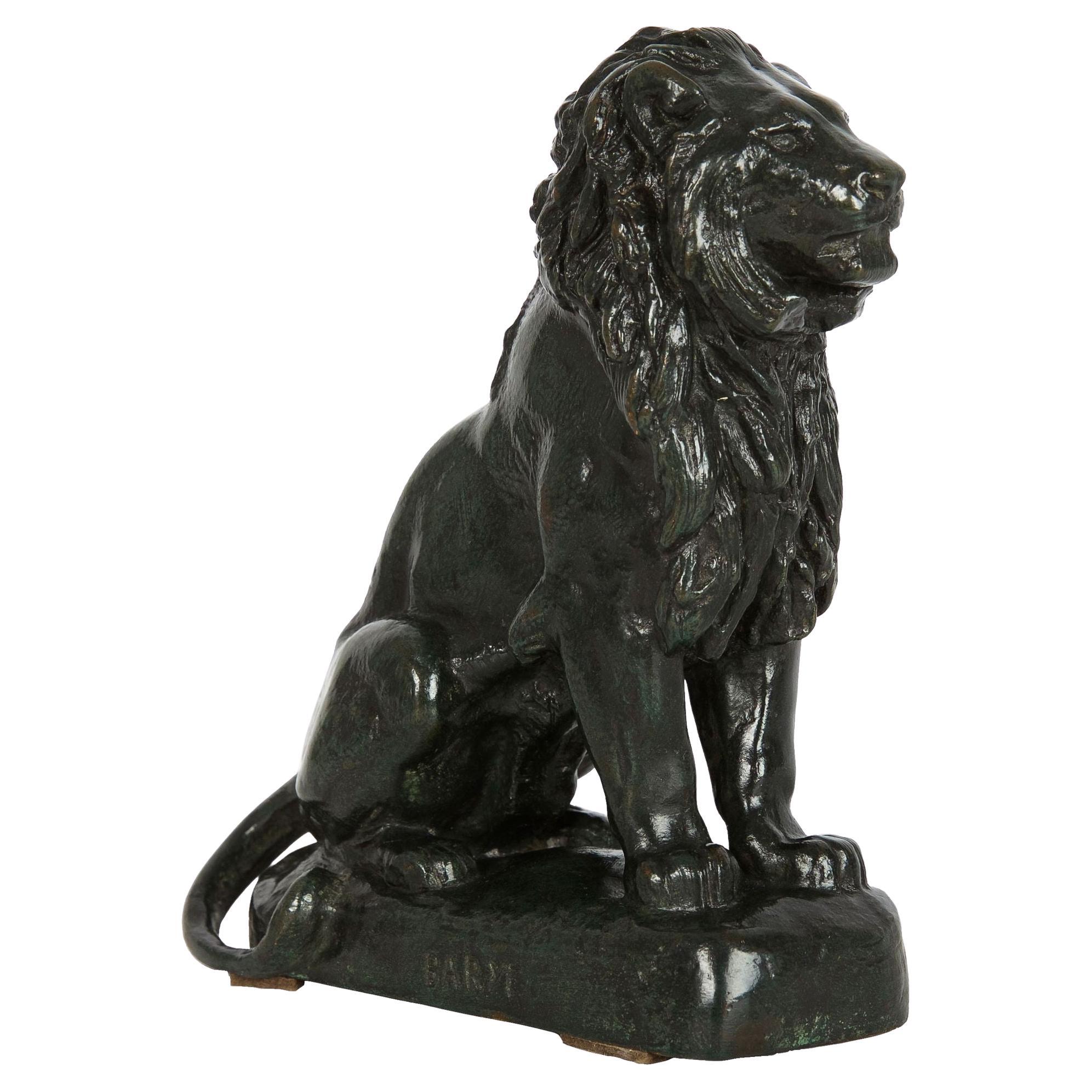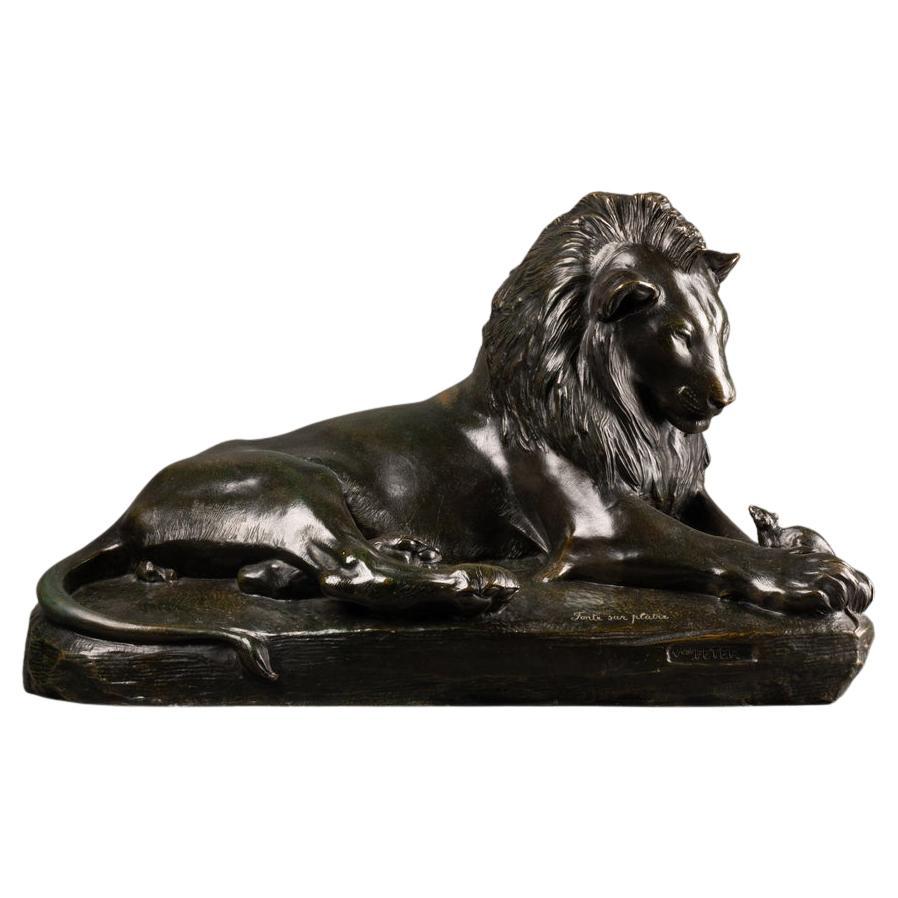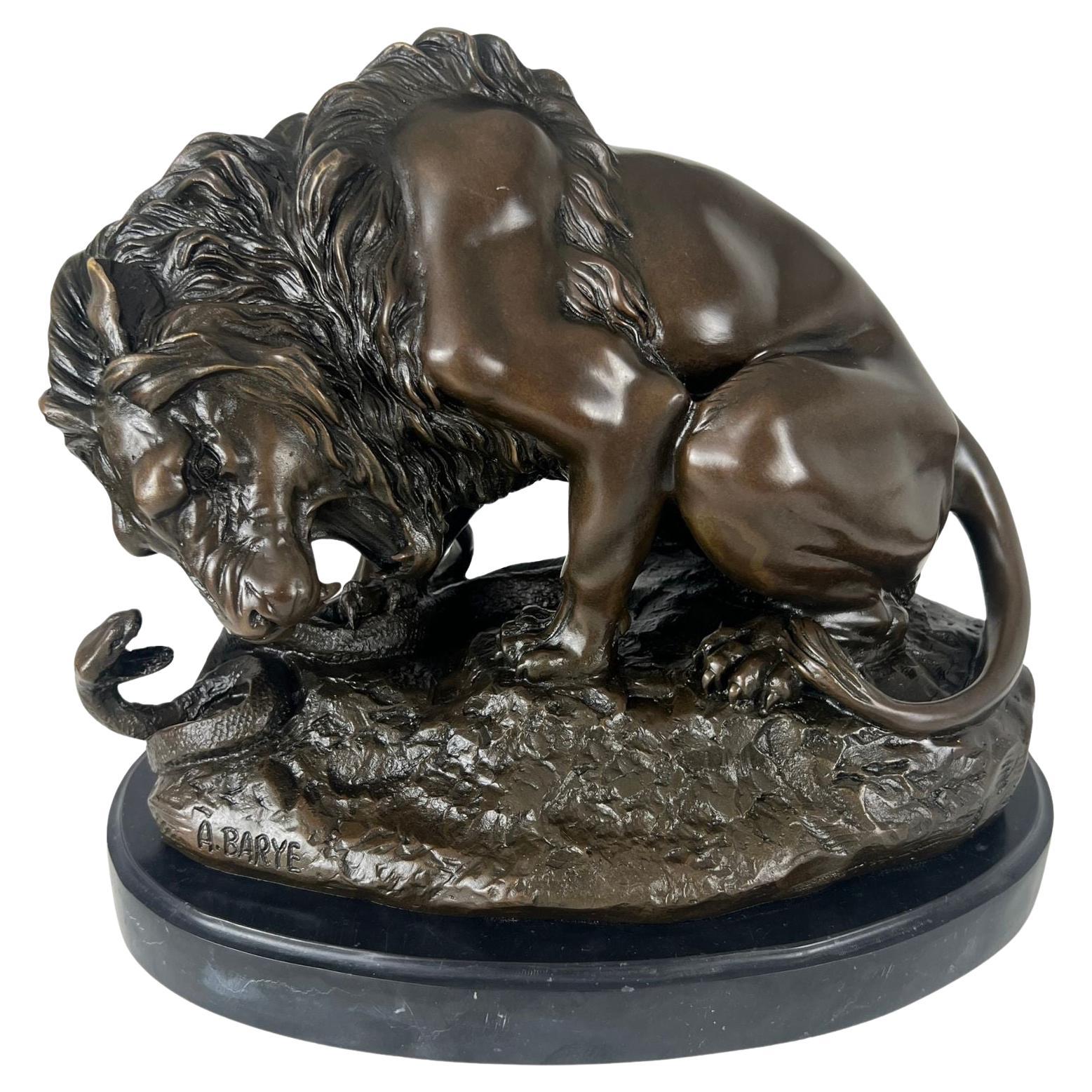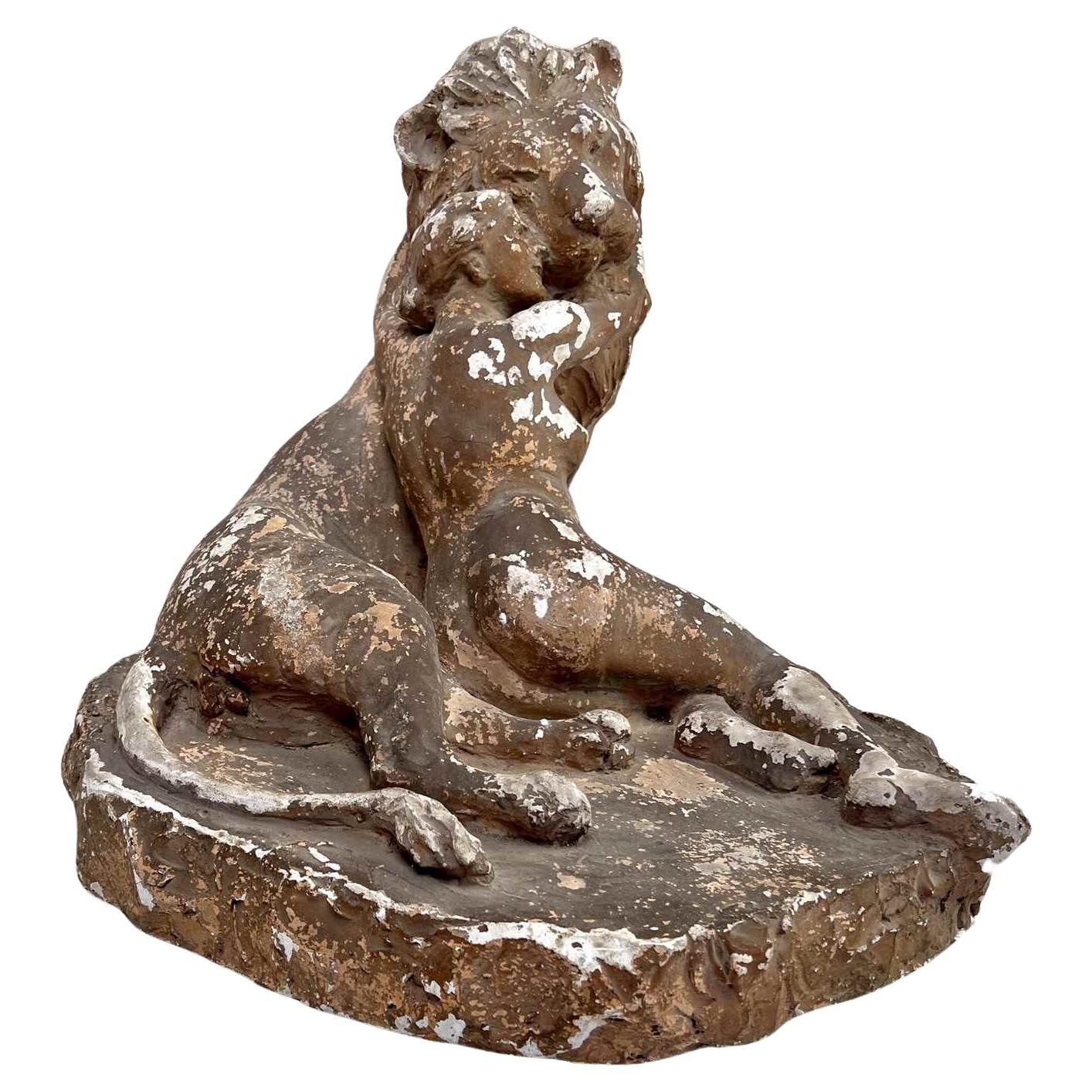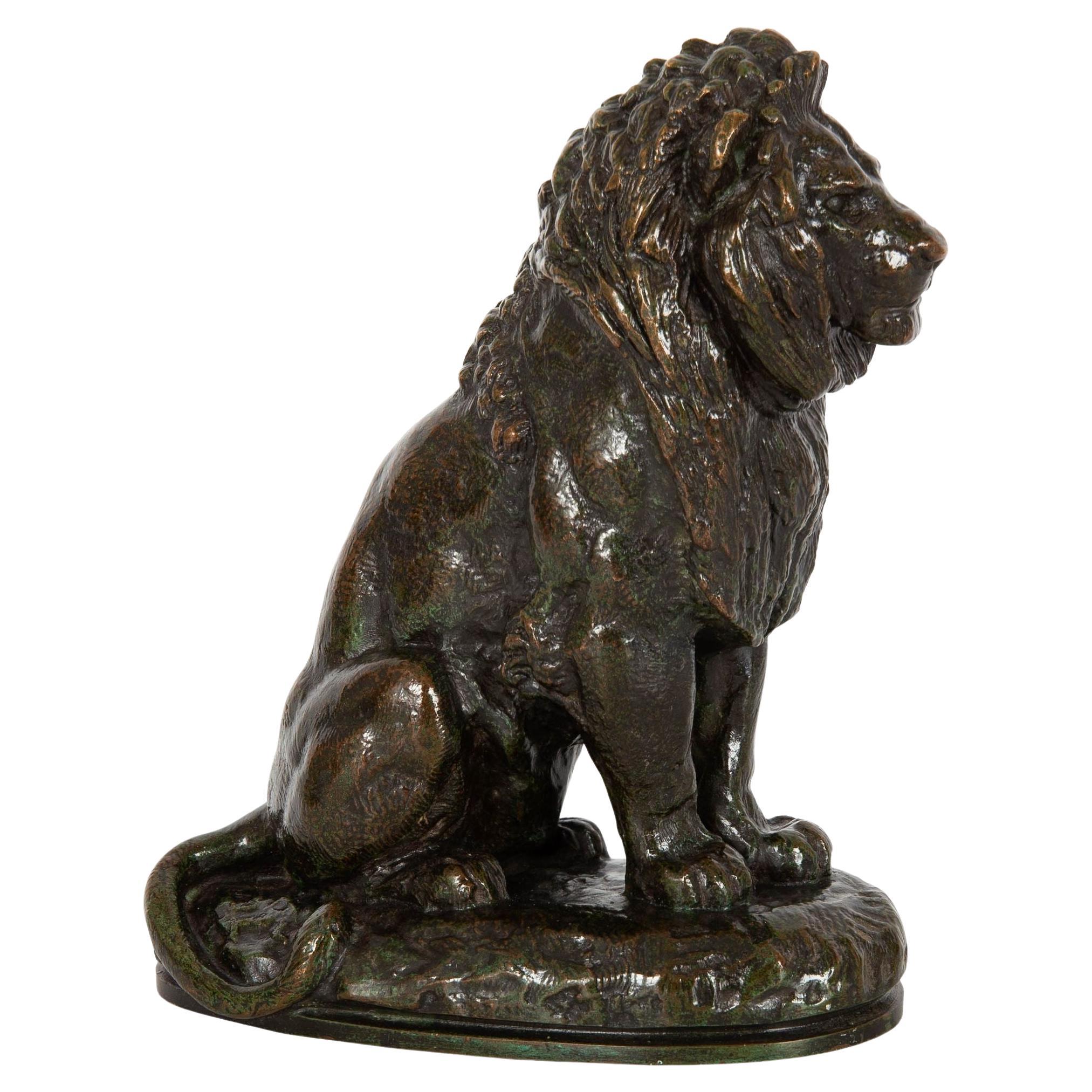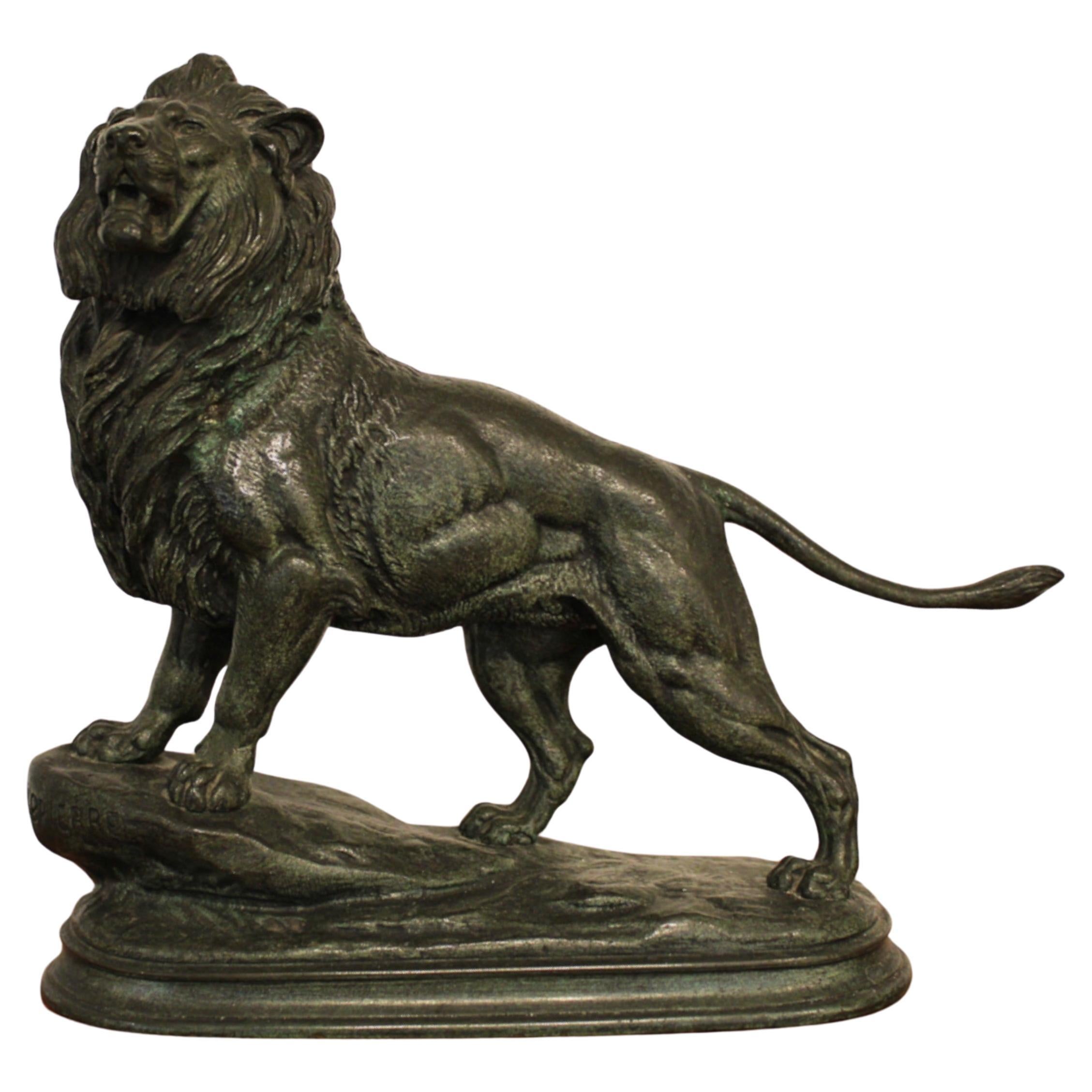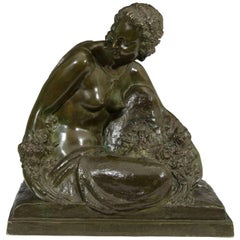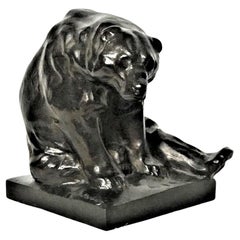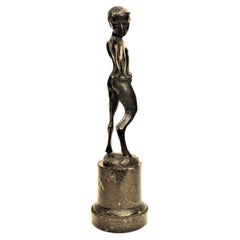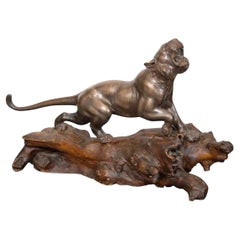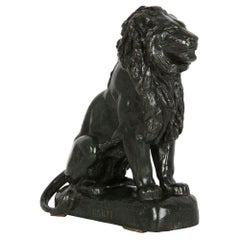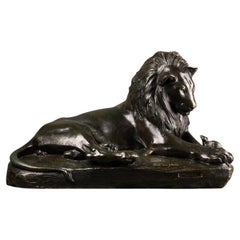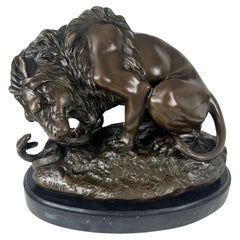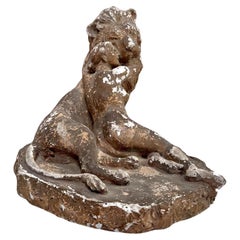Items Similar to Ernst Seger, David and Lion, German Art Deco Patinated Bronze Sculpture, c. 1920
Want more images or videos?
Request additional images or videos from the seller
1 of 12
Ernst Seger, David and Lion, German Art Deco Patinated Bronze Sculpture, c. 1920
$5,800
£4,430.63
€5,090.78
CA$8,292.75
A$9,136.68
CHF 4,729.70
MX$110,008.02
NOK 59,889.44
SEK 56,262.34
DKK 38,009.12
About the Item
Signed “E. Seger”.
Black patina.
Dimensions
Height: 8 inches (20cm)
Width: 7.5 inches (18.75cm)
Depth: 8.5 inches (21.25cm)
THE BIBLE STORY
Samuel 17:34-36
Originally, Saul would not allow David to fight Goliath (17:33). Saul’s reason was simply that Goliath would be stronger than David. David was young and he did not have the experience to fight such a capable enemy as Goliath. David was likely to die, and his death would benefit nobody.
Often people wrongly imagine that they are acting in faith (in other words, that they are trusting God). Really, they are acting in a foolish manner, as if the danger is not real. They are not trusting in God, but in their own thoughts, hopes and desires.
David’s reply to Saul shows us his attitudes. This reply explains clearly why David had offered to fight Goliath. In other words, it shows how David considered himself able to defeat Goliath.
Like many boys and young men in Israel, David had worked as a shepherd. That is, he looked after sheep. He was responsible to look after those sheep in every way. In particular, he had to protect them from wild animals.
Lions and bears are some of the fiercest large wild animals. They were common in Israel at the time of the Bible. They are much stronger than a man (see for example 1 Kings 13:24 and 2 Kings 2:24). Only the bravest and strongest men were able to kill a lion (Judges 14:5-6; 2 Samuel 23:20). However, David had killed both a lion and a bear. He had killed animals that were stronger than him.
David did not believe that the strongest man would win the fight. David had a close relationship with God; he was trusting God to rescue him (17:37). David was not pretending that there was no danger. However, God’s Holy Spirit was active in David’s life (16:13). By the power of his Holy Spirit, God had given David the faith (trust in God) to fight Goliath. Because David really was trusting God, there was no reason for him to be afraid of Goliath.
THE ARTIST
Ernst Seger (1865 1939), born in Neurode (Nowa Ruda, now Poland), studied sculpturing from 1884 at the Kunstschule in Breslau under Robert Härtel. From 1886 he worked in the Atelier of Christian Behrens, where he created the Eichendorff-Memorial for the Silezian City of Neisse. From 1893 to 1894 Seger stayed in Paris where he worked in the atelier of Auguste Rodin. However, Seger finally chose a ‘Jugenstill’ and a more ‘naturalistic’ or ‘Neuklassizismus’ style. His sculptures, modelled like the Greek antiques, were later greatly admired by the National Socialists.
At the end of 1894 Ernst Seger went back to Berlin, founded his own atelier and created the Kaiser Wilhelm I memorial for the Silesian City of Glatz. In 1897 Seger created the sculpture ‘Jugend’ (‘Youth’), which was displayed at the ‘Große Berliner Kunstausstellung’ in 1898, at the ‘Große Berliner Kunstausstellung’ in 1899, at the ‘Münchener Glaspalast Ausstellung’ in 1899 and at the ‘Münchener Glaspalast Ausstellung’ in 1908. As a sculptor Seger regarded this as his first relevant work, his breakthrough. A copy of the sculpture in bronze, 1.60 metres high, was placed in the ‘Scheitniger Park’ in Breslau (now Wroclaw). In 1898 Segers ‘Diana’, the Roman Goddess of the Hunt, the Moon and Childbirth, was unvealed in Park Szczytnicki, Breslau, Polen (earlier ‘Schneitniger Park’). Until 1945 the sculpture stayed in the Schneitniger Park, Breslau. This part of the park is still called ’Dianagarten’.
After the turn of the century the elegant female dancers and nudes by Seger gained great popularity. In 1905 Ernst Seger created -together with the sculptor Bernhard Sehring- the ‘Bismarck Brunnen’ (‘Bismarck Fountain’) in Breslau. This memorial-fountain (which still exists) represents the allegories ‘Kampf’ and ‘Sieg’ (‘Battle and Victory’). Seger’s ‘Verwundete Amazone’ (‘Wounded Amazon’), displayed at the Grosse Münchner Kunstausstellung in the Glaspalast in 1908, was placed in the garden of the ‘Kaufhauses Wertheim’ in Berlin. In the same year he was appointed as a professor. Seger’s marble sculpture ‘Kypris’, created in 1916, was placed in the Alten Nationalgalerie in Berlin. In 1925 the City of Berlin acquired his sculpture ‘Anbetung’ and placed it at the Johannaplatz. ‘Storchenbrunnen’ (‘Stork-fountain’), was placed in 1931 at the Adolf-Scheidt-Platz in Berlin. In 1935 the American newspaper publisher William Randolph Hearst bought Seger’s sleeping ‘Ganymede’.
During the Third Reich Ernst Seger was commissioned numerous Hitler busts; in 1933 one of them was placed in the hall of honour at the ‘Internationale Funkausstellung’(‘German Radio Exposition’) in Berlin. At the turn of the year 1933/1934 he created a relief of ‘Hindenburg and Hitler’. Despite Segers popularity and fame his life-size ‘Am Ziel’ (‘At the Finish’) which had stood at the edge of the Berlin Wannsee since 1934, was melted down in 1940, as bronze was needed for the war-industry (‘Am Ziel’, 190 cm high, was displayed for the first time at the exhibition ‘Hundert Jahre Berliner Kunst’, 1929, organized by the Verein Berliner Künstler).
At the Great German Art Exhibitions Seger was, until his death in 1939, represented with seven sculptures, including ‘Sportlerin’. Adolf Hitler bought ‘Lebenskraft’ (‘Vitality’) for 15,000 RM, as well as ‘Gewichtheber’ (‘Weightlifter’) and ‘Kraftgefühl’ (‘Feeling of Power’).
Ernst Seger died in August 1939 in Berlin. Seger’s gravestone at the Südwestkirchhof Stahnsdorf bears his marble relief ‘Der Bildhouwer und sein Gedanken’, which was displayed at the Grosse Berliner Kunstausstellung 1921.
- Creator:Ernst Seger (Sculptor)
- Dimensions:Height: 8 in (20.32 cm)Width: 7.5 in (19.05 cm)Depth: 8.5 in (21.59 cm)
- Style:Art Deco (Of the Period)
- Materials and Techniques:Bronze,Patinated
- Place of Origin:
- Period:
- Date of Manufacture:circa 1920s
- Condition:Wear consistent with age and use. We make our best effort to provide a fair and descriptive condition report. Please examine photos attentively, as they are part of the description. Send us a message to request more details or discuss price.
- Seller Location:New York, NY
- Reference Number:1stDibs: LU2819324653472
About the Seller
5.0
Gold Seller
Premium sellers maintaining a 4.3+ rating and 24-hour response times
Established in 1993
1stDibs seller since 2017
86 sales on 1stDibs
Typical response time: 5 hours
- ShippingRetrieving quote...Shipping from: New York, NY
- Return Policy
Authenticity Guarantee
In the unlikely event there’s an issue with an item’s authenticity, contact us within 1 year for a full refund. DetailsMoney-Back Guarantee
If your item is not as described, is damaged in transit, or does not arrive, contact us within 7 days for a full refund. Details24-Hour Cancellation
You have a 24-hour grace period in which to reconsider your purchase, with no questions asked.Vetted Professional Sellers
Our world-class sellers must adhere to strict standards for service and quality, maintaining the integrity of our listings.Price-Match Guarantee
If you find that a seller listed the same item for a lower price elsewhere, we’ll match it.Trusted Global Delivery
Our best-in-class carrier network provides specialized shipping options worldwide, including custom delivery.More From This Seller
View AllMarcel-André Bouraine, Nude, French Art Deco Bronze Sculpture, circa 1920s
By Marcel-André Bouraine
Located in New York, NY
An Art Deco bronze sculpture of a seated semi-nude woman by Marcel-André Bouraine, French, 1886-1948.
Category
Vintage 1920s French Art Deco Figurative Sculptures
Materials
Bronze
$4,550 Sale Price
30% Off
Joseph Franz Pallenberg, Bear, German Art Deco Bronze Sculpture, ca. 1920s
By Joseph Franz Pallenberg
Located in New York, NY
German Art Deco
Joseph Franz Pallenberg
Bear
Patinated Bronze
ca. 1920’s
Signed “Jos. Pallenberg”.
Black patina, original black marble base.
Dimensions:
Height: 8 inches (...
Category
Vintage 1920s German Art Deco Animal Sculptures
Materials
Bronze
Austrian Jugenstil Patinated Bronze Sculpture of Fawn Youth, Ca. 1900
Located in New York, NY
Probably Austrian, this lovely Jugenstil desk-sized black-patinated bronze figurine on its original marble pedestal depicts a fawn youth, checking the size of his tail to see how muc...
Category
Antique Early 1900s Austrian Jugendstil Figurative Sculptures
Materials
Marble, Bronze
A 19th Century Japanese Signed Bronze Tiger Sculpture, Circa 1860s
Located in New York, NY
19th Century Japan
Tiger
Bronze Sculpture
Circa 1860s
DIMENSIONS
Tiger with base is 33" L x 21" H x 21" D
The bronze tiger is 28" L x 15" H
ABOUT
A finely cast bronze sculpture of a...
Category
Antique 1860s Japanese Japonisme Animal Sculptures
Materials
Bronze
Charles Raphaël Peyre, French Art Deco Silvered Bronze Sculptural Group, c. 1925
By Charles Raphaël Peyre
Located in New York, NY
Art Deco silvered bronze sculptural group with two female putti figures reclining together in an embrace, surrounded by flowers and filigree. Sculpture has a beautiful silver finish, and rests on the original rouge marble base. Signed on the right front “Raphael Peyre”; and foundry mark “B.L. Paris” with “Cire Perdue” (lost wax) in an oval cartouche in the back.
The piece is very heavy (51 pounds), crating recommended for shipment.
Charles Raphaël Peyre...
Category
Vintage 1920s French Art Deco Figurative Sculptures
Materials
Bronze
Franz Xaver Bergmann, Odalisque, Vienna Bronze Sculpture, Ca. 1900
By Franz Xaver Bergman (Bergmann)
Located in New York, NY
This wonderful life-like sculpture depicts a half-naked odalisque reclining in a lazy pose on silk pillows on an ottoman, covered with a lion's skin. With bare breasts, only a small ...
Category
Antique 1890s Austrian Art Nouveau Figurative Sculptures
Materials
Bronze
You May Also Like
Rare French Antique Bronze Sculpture “Seated Lion No.4”After Antoine-Louis Barye
By Antoine-Louis Barye
Located in Shippensburg, PA
Initially modeled by Barye in 1846 as a commission by Louis-Phillipe for the Tuilleries Gardens at a cost of 10,000 francs, the life-size sculpture sat near to Barye's Lion au Serpent until it was later moved in 1867 to the grand entrance to Pavilion de Flore and a pair was crafted for it using a mechanical technique, a gesture which incensed Barye, as he preferred to sculpt a mate to oppose Lion Assis...
Category
Antique 19th Century French Romantic Animal Sculptures
Materials
Bronze
Victor PETER '1840-1918' : "Le Lion et le Rat", Bronze Fonte Susse Frère 1910-20
By Victor Peter
Located in SAINT-OUEN-SUR-SEINE, FR
Victor PETER (1840-1918)
"Le Lion et le rat" / "The lion and the rat"
Epreuve en bronze à patine verte / Dark green patinated bronze sculptu...
Category
Early 20th Century French Art Deco Animal Sculptures
Materials
Bronze
Bronze Sculpture, Lion with Snake, After A. Barye, France, 20th Century.
By Warranty Paris JB Depose, Antoine-Louis Barye
Located in Regensburg, DE
Solid bronze figure of a lion fighting a snake, a famous motif by A. BARYE.
Engraved on the plinth “A. BARYE” (Antoine-Louis Barye, 1795–1875), one of the most important French sculp...
Category
Vintage 1970s French Neoclassical Animal Sculptures
Materials
Marble, Bronze
‘Una And The Lion' Sculpture By Octave Galliard-Sansonetti Dated 1903
Located in London, GB
Indulge in the graceful allure of this exquisite masterpiece sourced on our ventures through the picturesque landscapes of France. Presenting 'Una and The Lion' Sculpture by the este...
Category
Antique Early 1900s French Art Nouveau Figurative Sculptures
Materials
Plaster
Bronze Sculpture “Lion Assis No. 2”, Antoine Louis Barye, circa 1880
By Antoine-Louis Barye
Located in Shippensburg, PA
Initially modeled by Barye in 1846 as a commission by Louis-Phillipe for the Tuilleries Gardens at a cost of 10,000 francs, the life-size sculpture sat near to Barye's Lion au Serpent until it was later moved in 1867 to the grand entrance to Pavilion de Flore and a pair was crafted for it using a mechanical technique. This incensed Barye, as he insisted a mate must be sculpted to oppose Lion Assis...
Category
Antique 19th Century French Romantic Animal Sculptures
Materials
Bronze
Lion bronze sculpture by Edouard Delabrièrre, France, 19th Century
By Paul Edouard Delabriere
Located in Paris, FR
Lion bronze by Edouard Delabrière (1829-1912)
Signed E. DELABRIERRE
France, 19th century.
Category
Antique 19th Century French Animal Sculptures
Materials
Bronze
More Ways To Browse
Furniture Germany 1920
Holy Spirit
Antique Radios
Bronze Man Art Deco Sculptures
Art Deco Nude Bronze Circa 1920
Diana Of The Hunt
Kaiser Wilhelm
Life Size Sculpture Of Man Bronze
David Goliath
William Randolph Hearst
20 Greek Style Marble Sculpture
Hitler Bust
Godhelp De Raad
Italian Carved Angels
Bronze Jugendstil
Dancing Figurine
Sculpture Female Torso
Art Deco Vintage Fan
